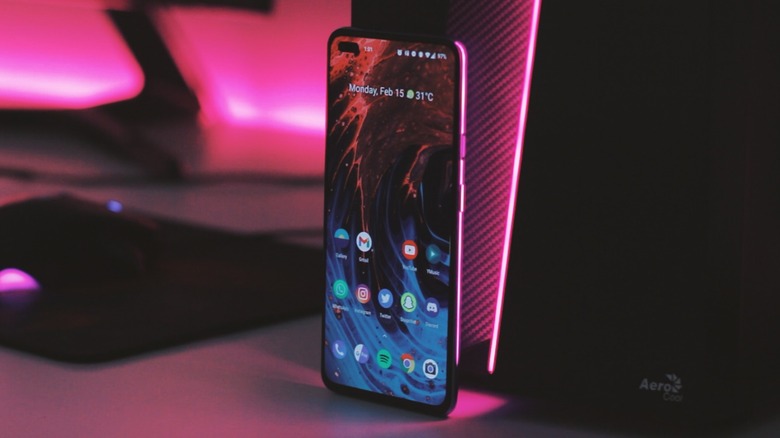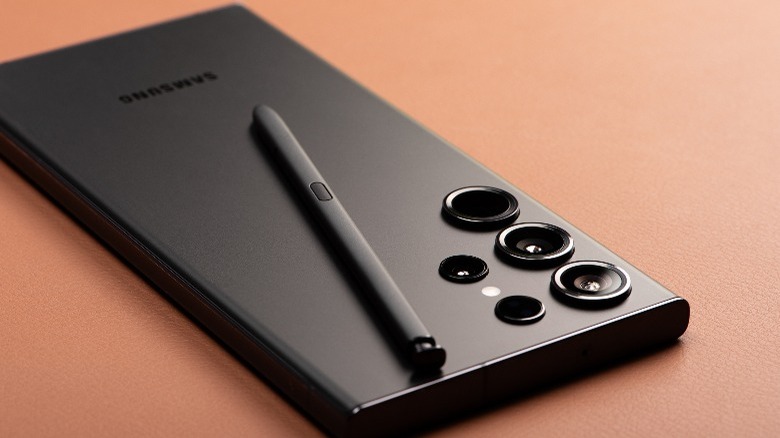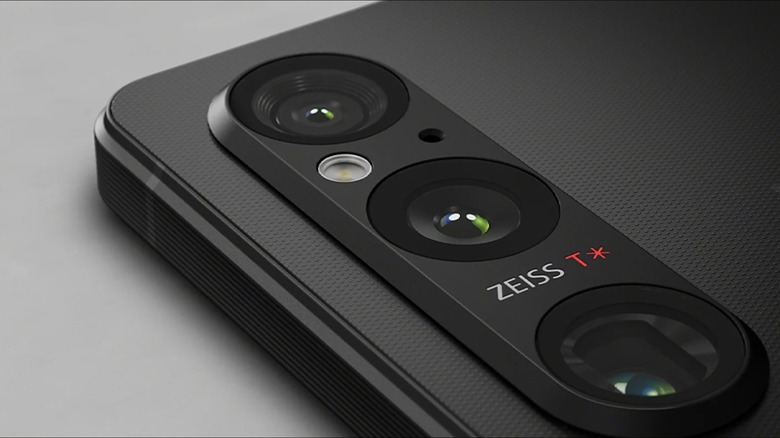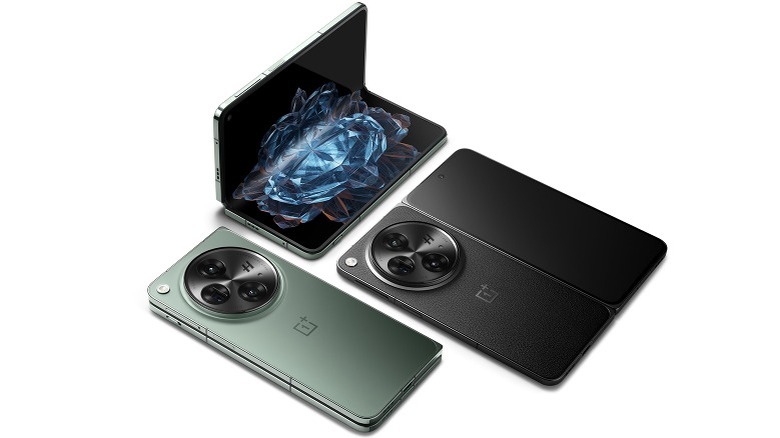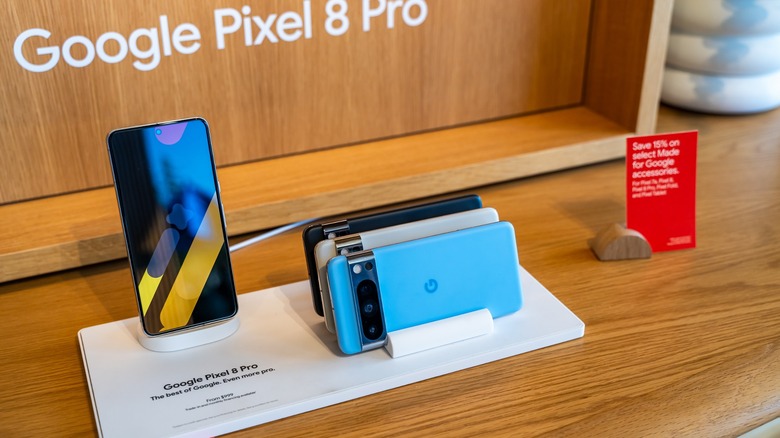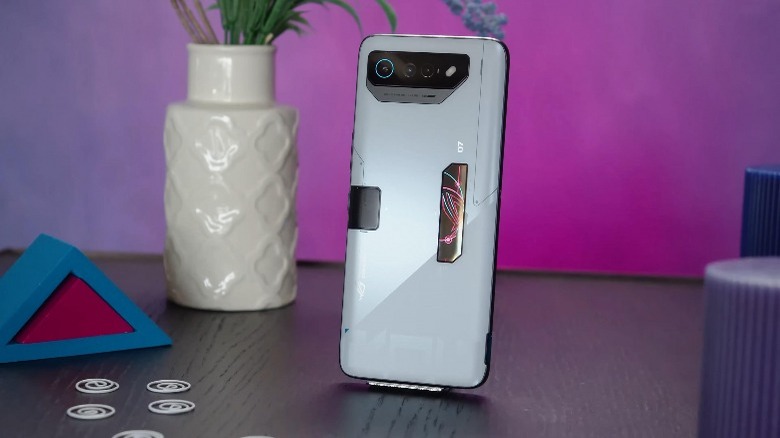Top 5 Android Smartphones With The Most Impressive Display Specs
Smartphones have increased exponentially in size in the past decade and a half. It's funny how a six-inch device is now considered compact when it used to be the definition of a phablet back in the day. With growing screen sizes, we now also enjoy higher resolutions, faster refresh rates, enhanced color fidelity, and other technical marvels that enrich the experience of using a smartphone.
With increasing levels of content consumption on phones, be it in the form of binging your favorite TikToks or watching HDR movies and shows, it is essential to keep display specifications in mind when purchasing a new smartphone. Innovations have allowed displays to morph into edge-to-edge, curved, and OLED forms — and competition has resulted in these phones being more affordable than ever.
But there are always a few contenders on the top, featuring the most cutting-edge display technologies. From crystal clear 4K panels to the truly fluid displays in foldables, here are five Android phones with some of the best screens in the industry.
Samsung Galaxy S23 Ultra
Samsung has been the undisputed king in display technologies, and not just in its smartphones. Through the many design innovations, be it foldable panels or the overflowing edge displays in its older flagships, Samsung has perfected the formula with its Ultra-series of phones.
The Galaxy S23 Ultra sure does play it safe with a tried and tested build and design, but that does not mean it shies away from perhaps the best all-around display in a smartphone. The mammoth 6.8-inch 2K AMOLED display refreshes at 120 Hz and has great outdoor visibility thanks to its 1,750 nits of peak brightness. The industry-leading display specifications aren't the only aspect that provides such an immersive experience — it's also the edge-to-edge, nearly bezel-less panel with a centrally aligned hole-punch camera.
Sporting powerful specifications and an S Pen, the S23 Ultra is a powerhouse of a phone, especially given how positive the user feedback has been in regards to its battery life. The phone also has one of the best camera setups, featuring a 200-megapixel shooter capable of 8K video recording and a specialized periscope lens allowing for up to 100x zoom.
Samsung's good track record with quick software updates and long-term support further make this phone a solid recommendation. As expected, all of this comes at a hefty price of $1,200, but there really isn't anything like the Galaxy S23 Ultra in the market.
Sony Xperia 1 V
It's 2024, and yes, Sony still makes smartphones — albeit targeted towards a niche audience of display and camera enthusiasts. The Sony Xperia 1 V features a 6.5-inch 4K OLED display with a 120 Hz refresh rate and a 21:9 refresh rate, which makes it one of the only smartphones you can buy that has such a ridiculously crisp resolution of 643 ppi. The display is traditionally slimmer and taller than most phones, making it perfect for scrolling through vertical videos or watching widescreen HDR content.
The Xperia 1 V operates on the Snapdragon 8 Gen 2 chipset, with 12GB of RAM and 256GB of storage that's further expandable via the microSD card slot. It boasts a triple camera setup utilizing Zeiss optics and Sony's in-house S-Cinetone video look. All three cameras can record in 4K HDR at 120 fps and offer the same autofocus technology found in Sony's professional cameras.
Being advertised as the perfect media powerhouse, the Xperia 1 V packs in front-facing stereo speakers and a 3.5mm headphone jack with support for Dolby Atmos and LDAC for wireless earphones. Rounding it all off, the matte glass texture and Corning's Gorilla Glass Victus protection up front offer a sleek yet robust in-hand feel — although you really must want the display specs and camera features to justify the steep $1,200 price tag of this phone.
OnePlus Open
OnePlus is best known for its price-to-performance flagships, yet its first venture into the foldable smartphone market truly demonstrates how premium the brand can go. Despite being its most expensive phone to date, the $1,500 OnePlus Open is quite competitive compared to its rivals in the same segment.
Both the 2K displays refresh at 120 Hz and have a ridiculously bright peak brightness of 2,800 nits. The cover display is a 6.31-inch 20:9 panel that can go as low as 10 Hz to save battery. When unfolded, the massive 7.82-inch nearly square display is immersive and surprisingly has the least visible crease in any foldable smartphone. Both panels are Dolby Vision compatible and provide a fantastic HDR viewing experience.
Being foldable unlocks unconventional use cases, such as multitasking with split-screen apps and floating windows. OxygenOS delivers a smooth and fluid experience, which, when paired with the OnePlus Open's fluid display, is an experience like none other.
The phone, in traditional OnePlus fashion, is powered by flagship-grade internals, including the Snapdragon 8 Gen 2, 16GB of RAM, and 512GB of UFS 4.0 storage. The triple camera setup, tweaked in partnership with Hasselblad, makes the Open a great shooter as well.
Google Pixel 8 Pro
Despite the price bump from the previous year's offering, the Google Pixel 8 Pro still manages to be great value for $1,000 — and one of its key selling points this time is the upgraded display. Owing to the adoption of an OLED panel, the Pixel 8 Pro has one of the brightest smartphone displays ever, peaking at 2,400 nits at maximum output. Stretch that across its flat 6.7-inch 120 Hz display, and you have yourself a winner.
The LTPO technology allows the phone to drop its refresh rate to as low as 1 Hz, aiding significantly in preserving battery life, especially when using the always-on display. Android 14's Material You design loves splashing colors throughout the user interface, and they indeed do reflect really well on the HDR10+ certified panel. Despite the lack of Dolby Vision, the Pixel 8 Pro offers a decent movie-watching experience.
Pixels have always been known for their cameras and software, and the 8 Pro takes both these aspects to greater heights. Google's computational photography has seen even more improvements thanks to the addition of software features. Exclusive Pixel-only goodies include AI-generated wallpapers, background noise remover, and a one-tap magic editor. The Tensor G3 chipset powering the phone, while not the most powerful, is efficient and provides a seamless user experience since it has been tailor-made for Pixel devices.
Asus ROG Phone 7
Asus has been on top of the smartphone gaming space with its ROG series of phones pushing the boundaries in raw performance. The ROG Phone 7 is no exception, packing the mighty Snapdragon 8 Gen 2 chip and up to 16GB of RAM. The beefy internals are no surprise, given that this is a gaming-oriented phone. However, the ROG Phone 7 also sports one of the fastest displays on any smartphone.
The 6.78-inch 165 Hz AMOLED panel with support for HDR10+ and an impressive peak brightness of up to 1,500 nits provides an experience while gaming like no other handset. Pairing a touch sampling rate of 720 Hz with Asus' rather bloat-free and stock Android user interface, this phone has perhaps the most fluid experience. You can set specific refresh rates for individual games, bypassing any default capped limits.
Unlike most modern slabs of glass and metal, the ROG Phone 7 has a noticeable forehead and chin, preventing mistouches while gaming. This also leaves space for a dual front-facing stereo speaker configuration, allowing for an immersive multimedia experience. The ROG Phone 7's cooler accessory not only promises better thermal performance but also has a subwoofer, a 3.5mm audio jack, another type-C port, and four tactile remappable buttons.
Asus has always prioritized good battery life in this series of phones, and the ROG Phone 7's 6,000 mAh battery provides exceptional endurance. The support for passthrough charging further extends the lifecycle of the battery, powering the phone directly without charging it.
